WRITTEN SPECIALLY FOR VIKALP SANGAM
In several recent public-campaigns against power, new and imaginative means of protest have been emerging. Many have lent their distinct mark, a signature for their cause, through their medium.
The ‘die-in’ campaigns for climate, the ‘rainbow-flag’ rallies, the ‘kolam’ protests against the CAA bill, the ‘tree-sit’ movements in different parts of the world are some great examples.
Right now, in Assam – a state known historically for its students’ movements – students from universities and schools are protesting en masse against a coal mine coming up in a rainforest – by making art!
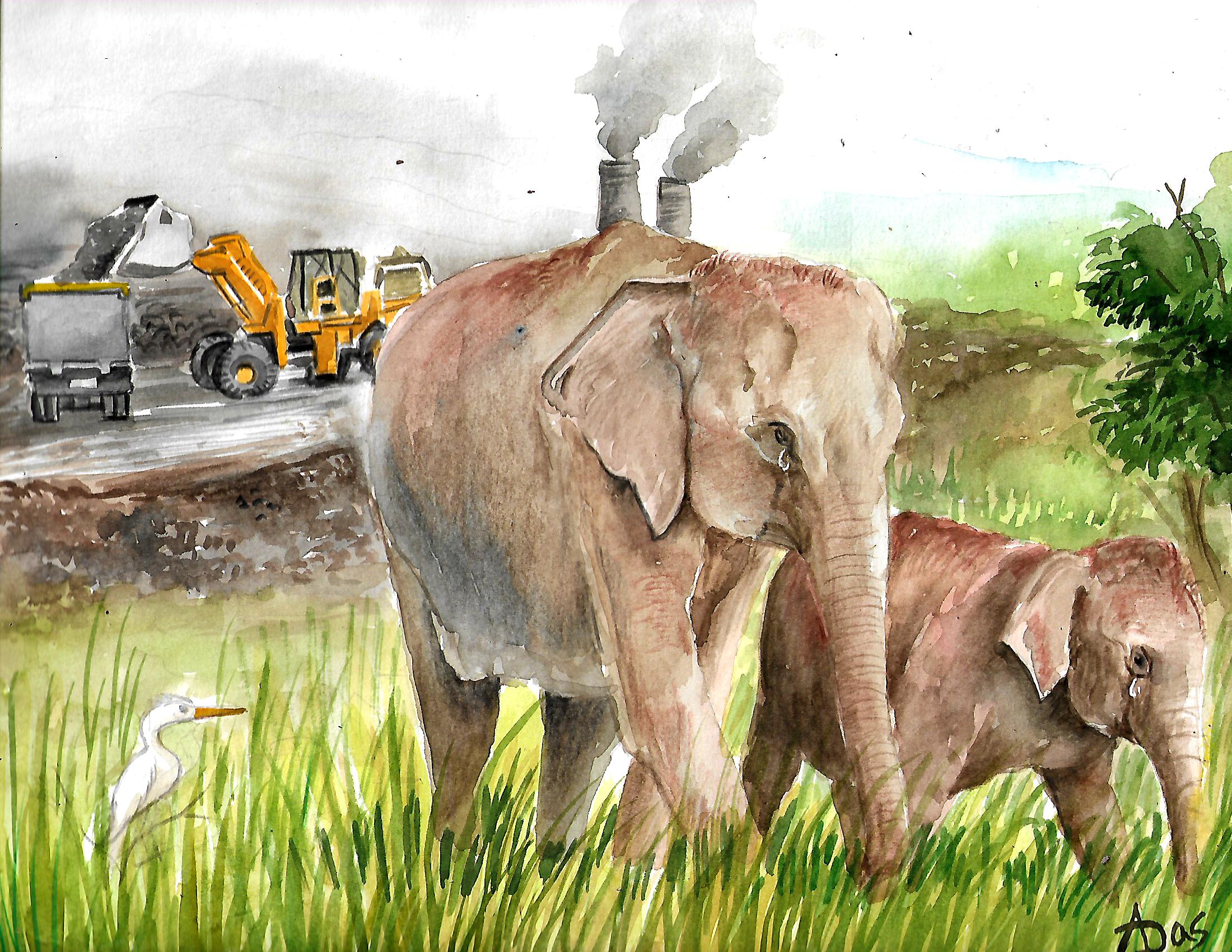
Arijit Das is an MBBS student from Silchar Medical College, Assam. His painting depicts how habitat loss due to activities like coalmining, causes elephants and other wildlife to move into agricultural fields and other human settlements. Assam has one of the highest rates of human-elephant conflict in India
An open-cast coalmine located within Dehing-Patkai Elephant reserve was recently approved by the Standing Committee of the National Board for Wildlife. 57.20 hectares was given a green signal by the committee for mining, out of the proposed 98.59 hectares. This forest is part of the largest stretch of lowland rainforest in India – and is dubbed the ‘Amazon of the East’.
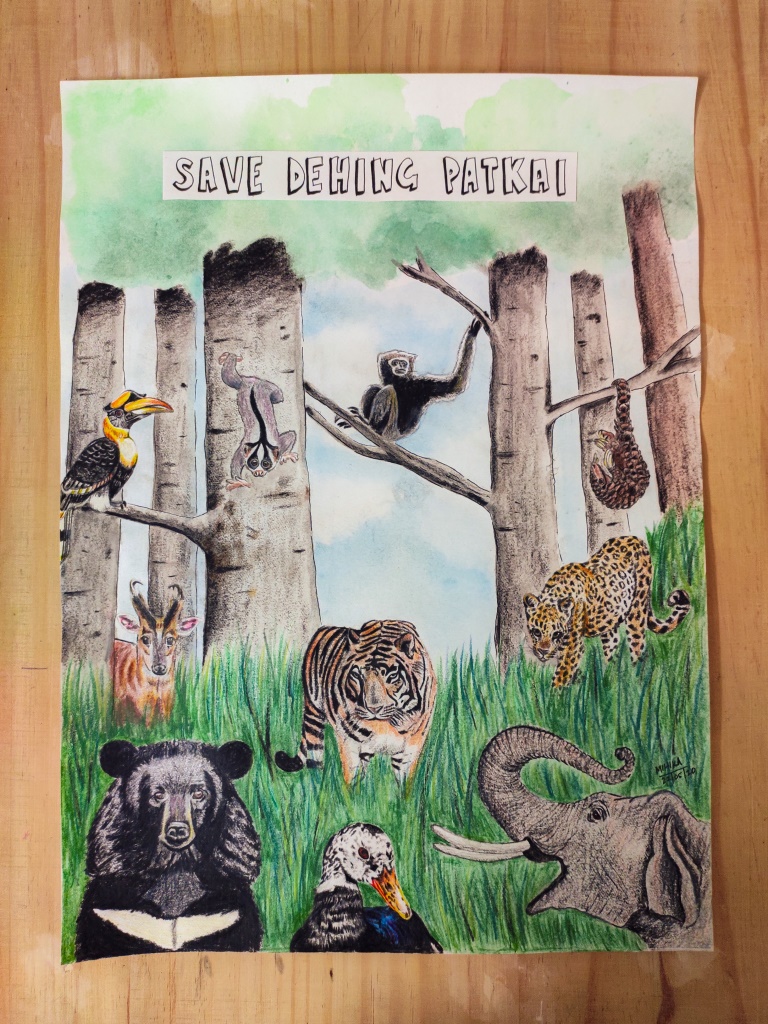
Mihika Sen researches Asian Elephant Acoustics in Kaziranga National Park, Assam. In her artwork, she has shown several schedule-1 species found in Dehing Patkai – including the Sunbear, Slow Loris, Asian Elephant, Hoolock Gibbon, White Winged Wood-duck, Chinese Pangolin, etc.
Lockdown may have sealed away the streets, the main canvas for public dissent. The Ministry of Environment, Forests and Climate Change, and the National Board for Wildlife (quite in contradiction to their titles) are using this as leverage and have till now cleared over 30 industrial projects in protected and community areas – over virtual meetings. Dehing-Patkai is just one of them.
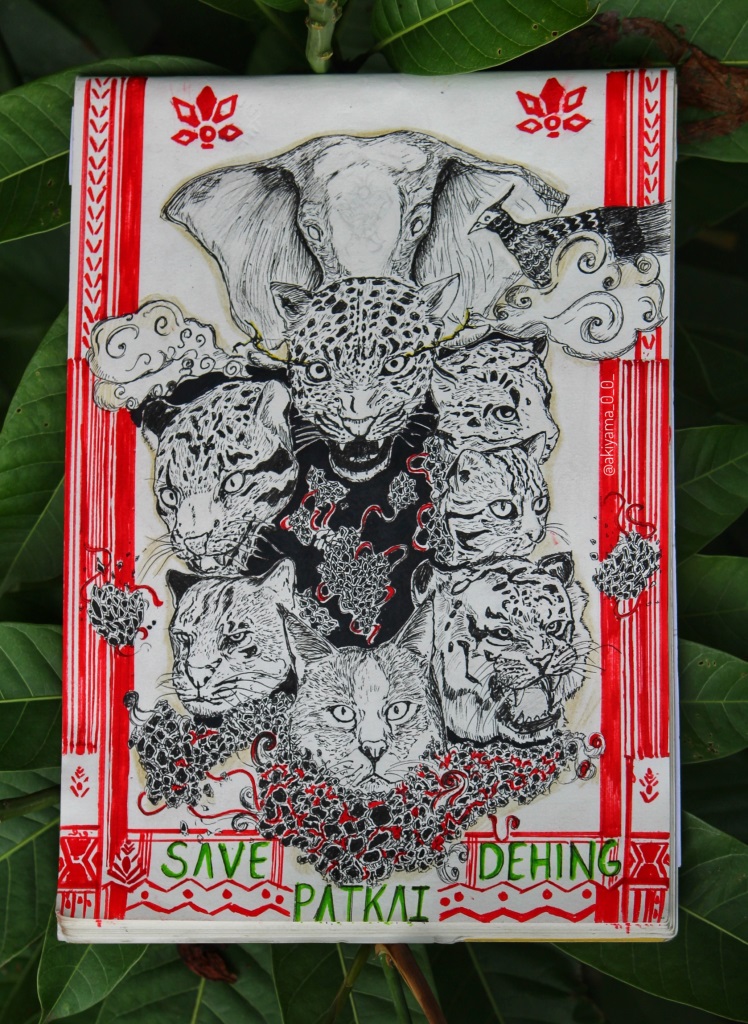
Ajay Saikia is from Teok town, in Assam and is an aspiring design student. Dehing Patkai is the only forest in India where seven Wild cats – Bengal Tiger, Leopard, Leopard cat, Golden Cat, Jungle Cat, Marbled Cat and Clouded Leopard – have been recorded. Ajay has depicted all of them in his artwork.
But hundreds upon hundreds of pieces of art-work are pouring in on social media – under the hashtags #savedehingpatkai , #iamdehingpatkai , #saveamazonofeast and so on. They are evoking this rich wilderness for the world to see and depicting what might happen if mining was allowed here. Other campaigns are also being inspired by this movement and following cue.
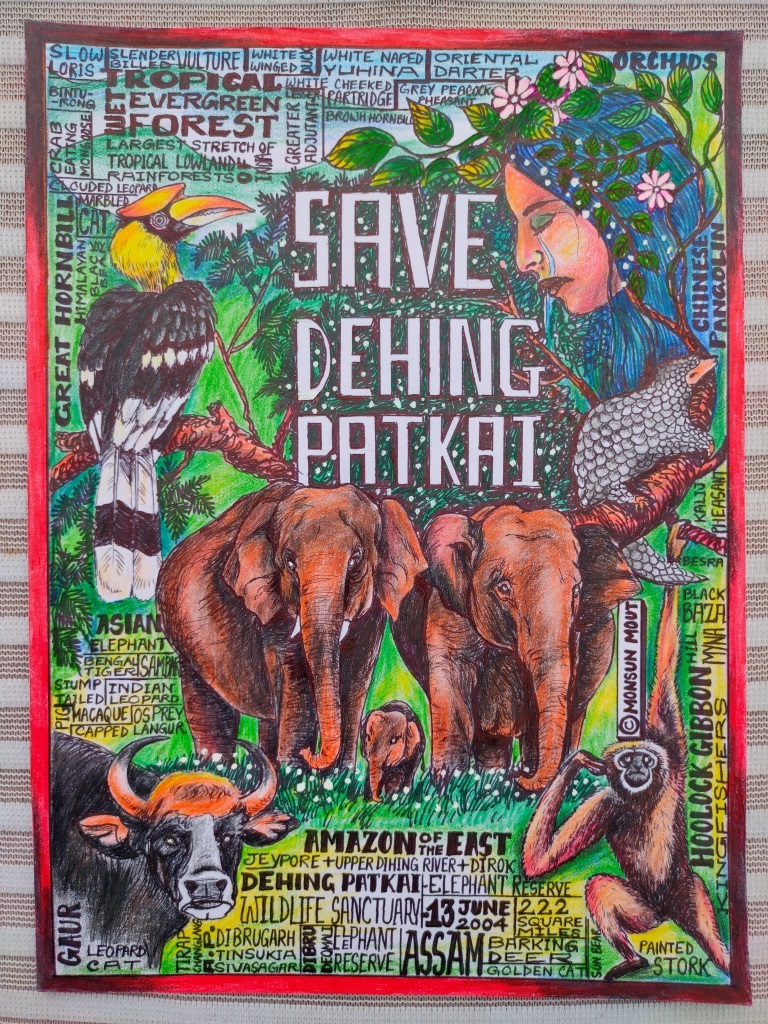
Monsun Mout is a lecturer of Chemistry, in Golaghat Polytechnic College, Assam. Her graffiti-art shows several species and communicates many features unique to Dehing-Patkai.
Coal India Limited, the state-owned company which seeks to mine here, comes with a coal-dark reputation. It was recently slapped with a penalty of 43.25 crores by the Assam forest department, for illegally mining in Dehing-Patkai and various other forests in Assam, for the past 16 years.
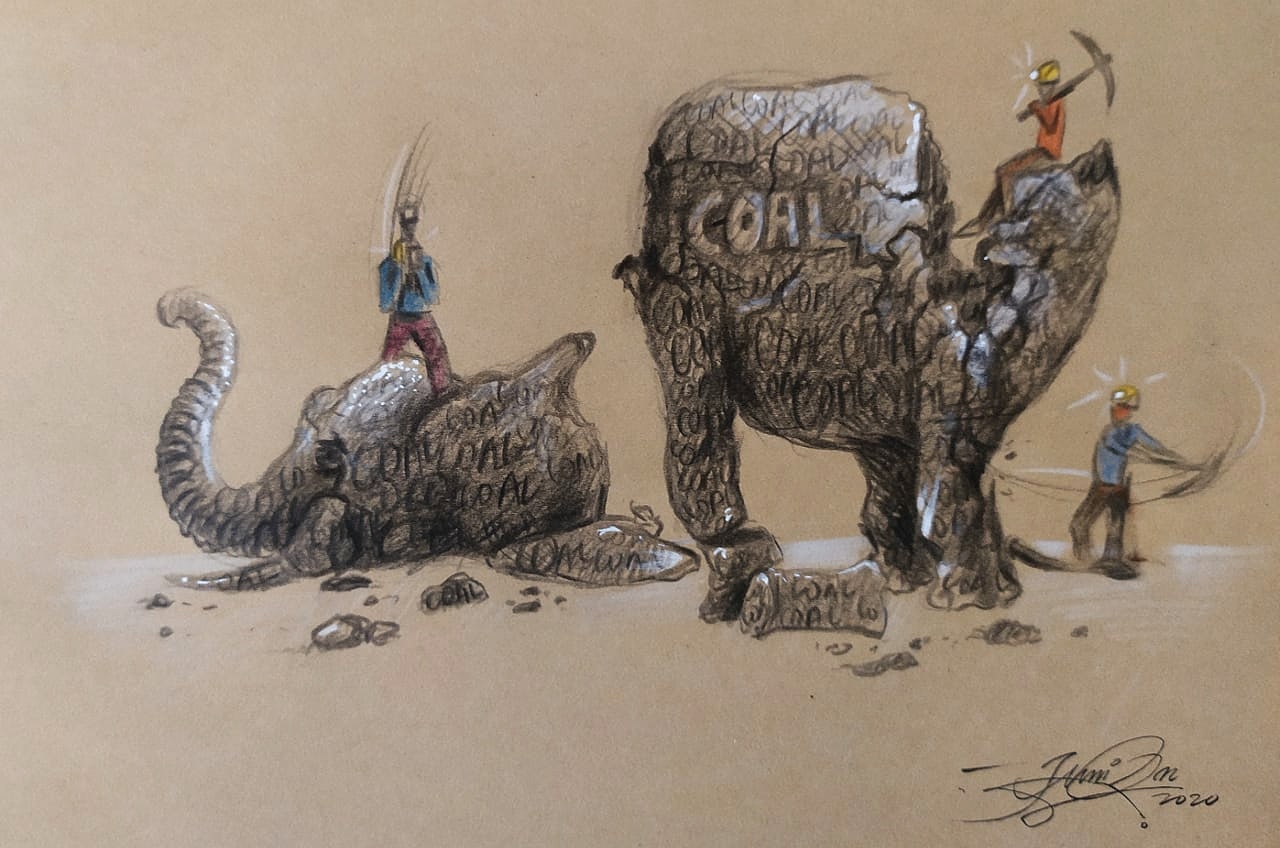
Jumon Thakuria is a Class 10 student of South Point School, Uttar Krishnapur, Assam. His is a powerful sketch showing the violence wrought upon the Asian Elephant, due to coalmining in his state.
The opening of forest areas for ‘temporary use’ and the inclusion of ‘post-facto’ clearances in the Environment Ministry’s present EIA draft, are among other undertakings by the centre, to law-proof illegal projects. Coal India Limited has been running various coal mines across the country without environmental clearances – a lot of them within tiger corridors and other protected areas. The company comes 8th in the Global carbon emission standings.
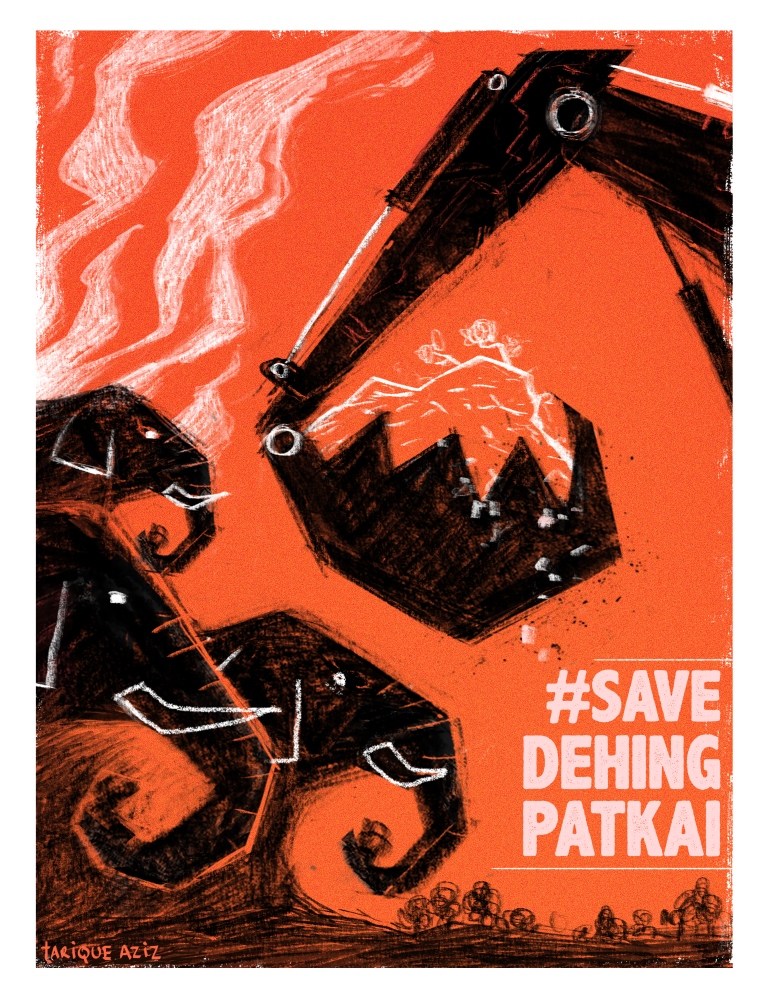
Tarique Aziz is a free-lance designer from Guwahati. His work in black and red, evokes the burning heat of coal, while the excavator’s arm confronts the elephant herd.
This week however, is seeing a huge youth-movement against this, reclaiming democratic space in Northeast India.
On May 24th, 19 student organizations across here started the ‘Northeast Solidarity for Environmental Justice’, demanding complete reversal of the 3 massive destructive projects to be located here, cleared during lockdown.
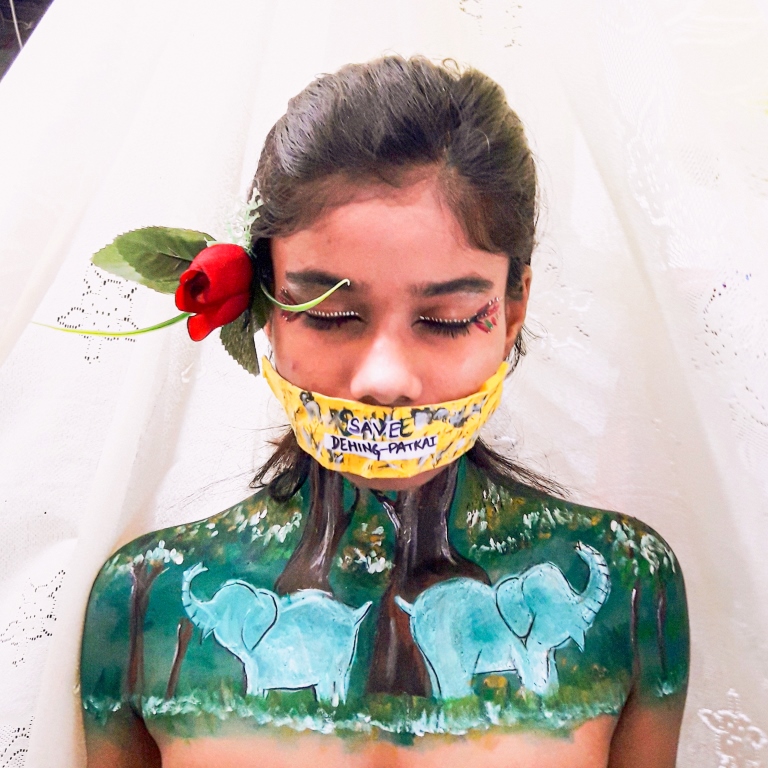
Afri Ismat Rahman is a student of History in Handique Girls College, Guwahati, Assam. Her make-up art lends a new form to this huge art-campaign.
The coalition was formed after an extensive oil drilling venture was given clearance inside Dibru-Saikhowa National park, in Assam. This was despite all the widespread digital protesting which was happening for Dehing-Patkai and Dibang valley, Arunachal Pradesh where a mega-hydropower project is proposed.
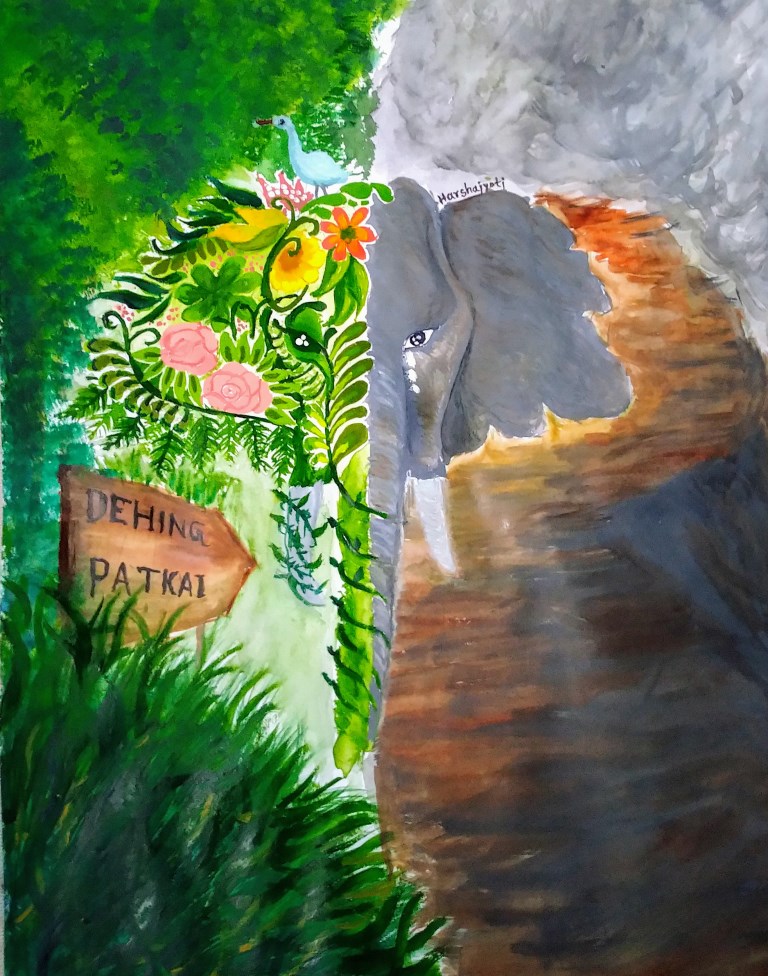
Harshajyothi Pathak is an engineering student from Kamrup District, Assam. His painting evokes the contrast of what the forest is now, and what it might become, if mining was allowed.
The Etalin dam proposed in Dibang Valley threatens to fell 2.8 lakh old-growth trees, and displace the population of Idu Mishmi people living here. Experts have also pointed out that the 3097 mega-watt project is being planned in a seismically active location. Dibang valley is also a unique example of longstanding community conservation.
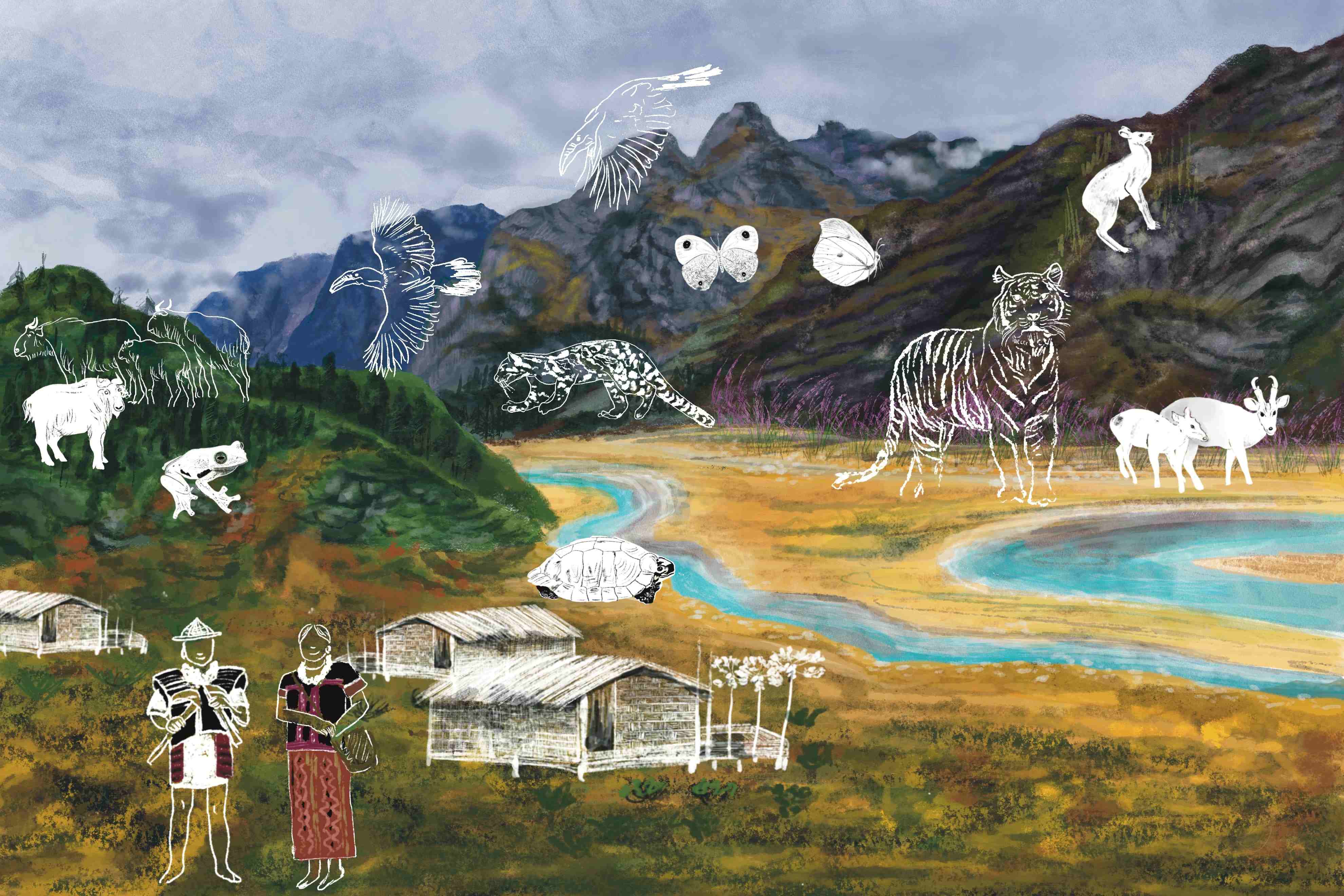
Kruti Patel is a bangalore-based independent-artist. Her painting hauntingly depicts spectral forms of all the life which would be erased from the Dibang Valley landscape, if the Etalin dam came to be.
In the genesis story of the Idu Mishmi, the first born to their ancestors is the Tiger and the second born is the Idu man. In their folklore the tiger is their elder sibling and other creatures their kin. Their language and culture ascribes animacy to the mountains, rivers and trees and has names for their spirits. They have strict taboos and practices which revere and protect biodiversity. Interestingly, a study done a few years ago, found that tiger density was 4.5 times higher in the Idu Mishmi community-owned forests, than in the Dibang Wildlife Sanctuary.
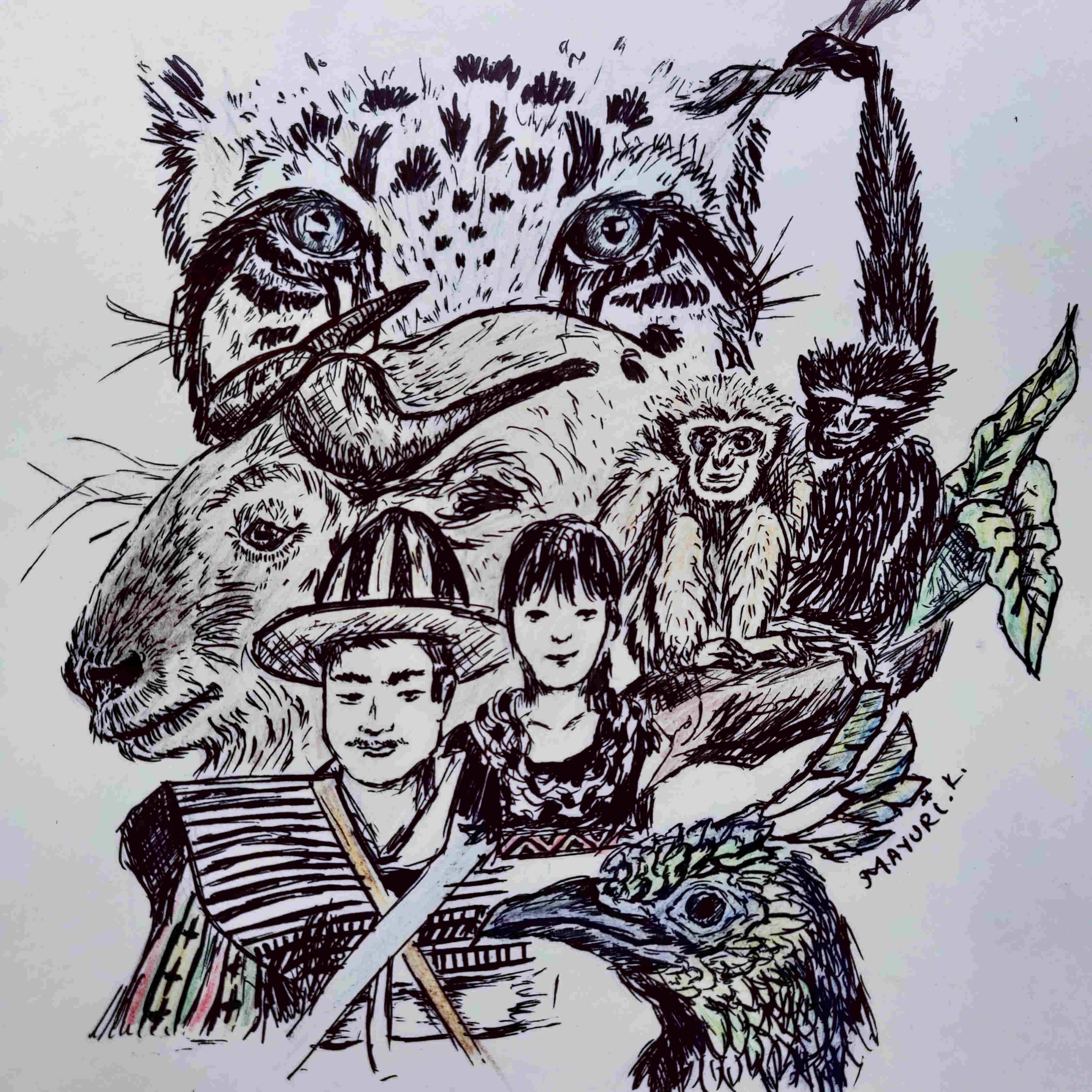
Mayuri Kotian is pursuing her Master’s degree in Wildlife Conservation Action, in Pune. Her sketch shows the Idu Mishmi tribe in their traditional attire, along with elusive animals like the Mishmi Takin, Hoolock Gibbon, Clouded Leopard and the Himalayan Monal, which roam in good numbers in Dibang Valley.
The students are asserting the rights of these forests and indigenous communities in this unique bio-region – and are raising objections against the government’s extractive regime, which values corporate interests over public welfare.
In their note to the press, they pointed out how several of the Northeast’s grassroots leaders and environmentalists are being kept in prison at this time.
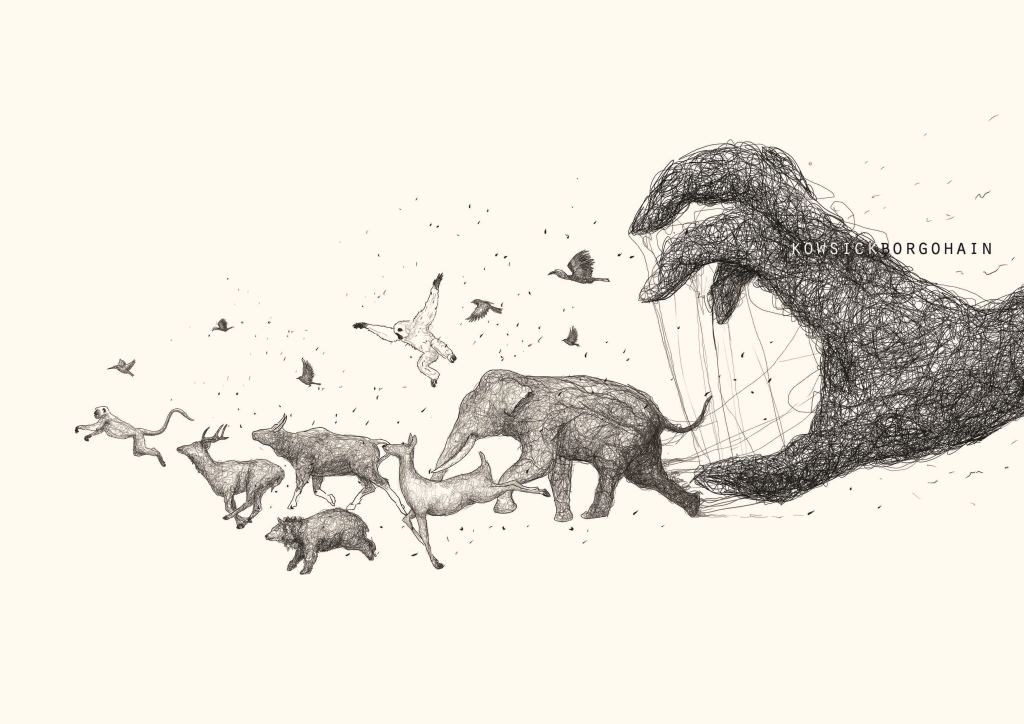
Kowsick Borgohain is an artist based in Guwahati, Assam. His pencil-doodle is a strong metaphor of the ‘human hand’ threatening the wilderness of the Northeastern forests.
They also highlighted the undebatable link between habitat loss and the spread of zoonotic diseases; to which the counter measure cannot be more rampant habitat destruction, to atone for myopic and discriminatory economic growth.
The Twitter-storms run by them, addressed to the authorities involved, are being supported widely across the country and outside of it. They have gone trending several times during these weeks.
Songs and raps for these forests are emerging. And their Art-storm, in various forms, continues its deluge and sings brightly against the gloom.
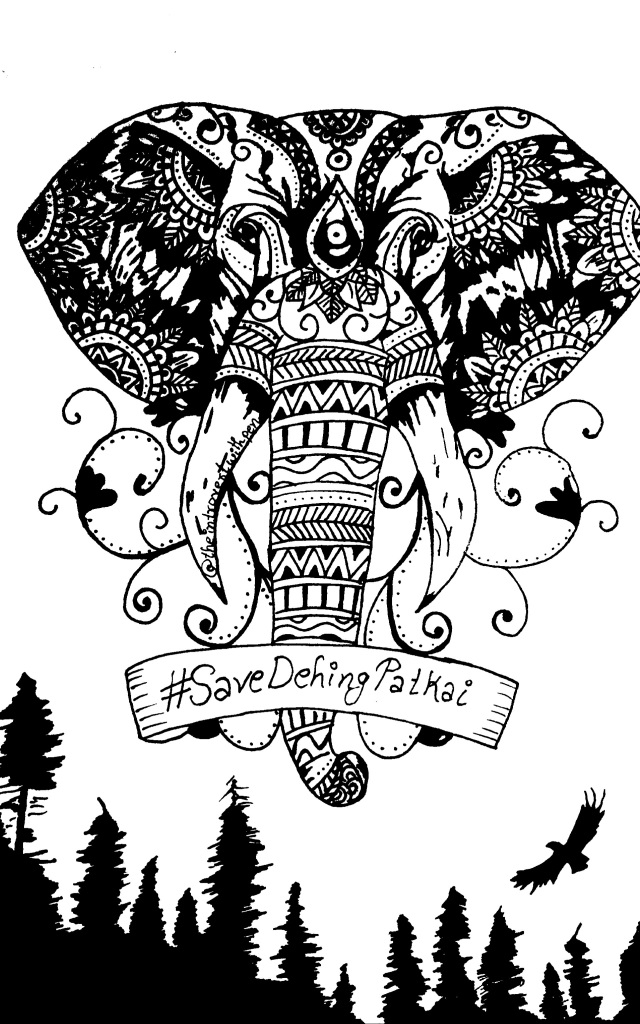
Twinkle Ahmed is a student of Botany in MDKG College, Dibrugarh, Assam. Her folk-art portrait of the elephant highlights its role as a keystone species in all the habitats it roams.